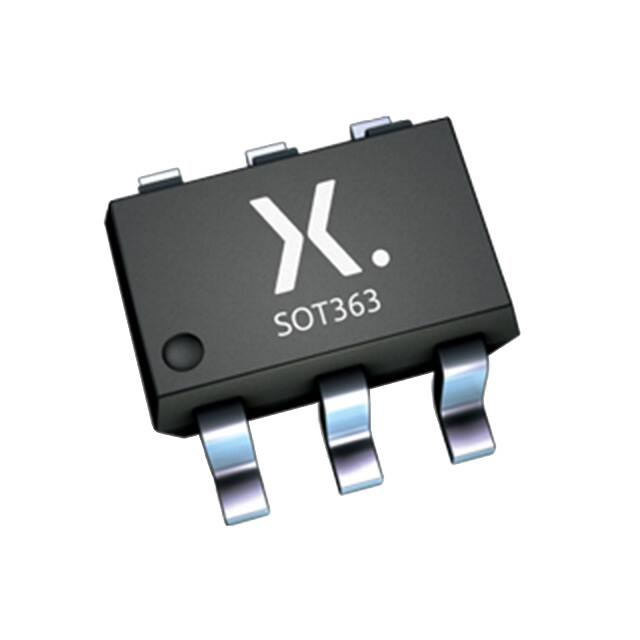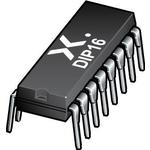Nexperia has established a reputable brand name in the area and is providing automotive-grade ICs in designs that are designed to comply with AEC-Q100 and AEC-Q101 requirements.
These microchips are the basis of the new era of vehicle electronics and serve numerous functions, including lighting systems, powertrain controllers, safety systems, and infotainment systems. Thermal stability, compact design, and efficiency are among the key attributes that make Nexperia's automotive portfolio a guarantee of consistent performance, whether in conventional or electric applications.
For engineers and OEMs seeking proven reliability, Nexperia provides a robust solution. Get high-quality Nexperia ICs for automotive and industrial projects directly from Jake Electronics.
Company & Market Context
Nexperia is a global semiconductor company headquartered in Nijmegen, the Netherlands. It specializes in discrete, logic, and MOSFET devices, with a clear automotive push. Their automotive application page lists domains such as chassis & safety, body control & lighting, infotainment/telematics, electrified powertrain (xEV), and conventional powertrains.
What this means is: the automotive environment isn't just another market segment. It demands AEC-Q100/Q101 qualification, extended temperature ranges, high reliability, and long lifetimes. Nexperia emphasizes that its automotive-qualified product portfolio complies with AEC-Q100/Q101 standards.
Given the increasing electronics content of modern vehicles—whether internal combustion engines, hybrid/electrics (xEV), or advanced driver assistance systems (ADAS)—ICS from companies like Nexperia play a vital role. The sourcing link provided helps potential users locate inventory and compare options.

What “Automotive-Grade” Means at Nexperia
When we talk about “automotive-grade” ICs from Nexperia, some key features and certifications stand out:
· AEC-Q100/Q101 qualification: This is the standard for automotive-grade logic and discrete semiconductors. Nexperia explicitly states that a broad portfolio of devices is certified.
· Extended temperature range: For example, many automotive logic devices from Nexperia are rated to operate up to 125 °C.
· Low power, high reliability, low ppm (defects per million): These are necessary because vehicles demand long life and robustness.
· Packaging innovations: For instance, Nexperia launched miniature leadless logic ICs in MicroPak XSON5 to save PCB area in space-constrained automotive systems.
· Dedicated supply chain & manufacturing: Their automotive-qualified products page indicates that the company supports long-term volume needs.
This combination of credentials sets "automotive-grade" apart from generic logic ICs used in consumer electronics.
Product Portfolio Highlights
The automotive-grade ICs offered by Nexperia have a very broad offering of logic devices, voltage translators, and multiplexers, which are designed to provide superior performance in the harsh automotive conditions. The two outstanding products in the line are:
1. 74HC238N,652 (3-to-8 Line Decoder/Demultiplexer)
The 74HC238N,652 is a high-speed CMOS 3-to-8 line decoder/demultiplexer from Nexperia, engineered for automotive and industrial control applications. It offers low power consumption, high noise immunity, and a fast propagation delay, making it ideal for signal routing, data decoding, and address decoding tasks in vehicle electronics. The device ensures dependable operation under wide temperature ranges, meeting automotive reliability standards.
2. 74AUP1Z125GW,125 (Bus Buffer/Line Driver with 3-State Output)
The 74AUP1Z125GW,125, produced by Nexperia USA Inc., is an ultra-low-power, high-performance bus buffer and line driver. Designed for use in compact automotive modules, it supports high-speed signal transmission with minimal power draw. This device features a 3-state output for bus-oriented systems, providing excellent drive capability and thermal efficiency in modern vehicle control units and infotainment systems.

Why These Devices Matter
Both the 74HC238N and 74AUP1Z125GW reflect Nexperia’s engineering excellence —combining compact packaging, low-voltage operation, and high-speed performance tailored for automotive environments. They comply with AEC-Q100 standards, ensuring reliability across extended temperature ranges and mission-critical automotive applications.
Applications in Modern Vehicles
Given the growing complexity of vehicle electronics, Nexperia’s automotive-grade ICs find application across many domains.
Powertrain & Electrification
In conventional powertrains & xEV (battery, inverter, on-board charger) systems: Nexperia lists products for 48 V BMS, high-voltage traction inverters, and on-board charger (OBC) applications.
Logic & control ICs are used for battery monitoring, sensor interfacing, logic translation in HV systems, etc.
Body Control, Lighting & Infotainment
In body electronics and lighting: e.g., adaptive front LED lighting, automatic HVAC blower motors, constant-current LED drivers, interior cabin. Nexperia provides logic and analog components for these functions.
Infotainment and telematics: With screens, cameras, and high-speed interfaces (USB, HDMI, LVDS, SerDes), Nexperia offers ESD protection, logic translators, multiplexers, and more.
Chassis & Safety Systems
In safety-critical systems like ABS/ESC, electric power steering (EPS), and airbag controllers, electronics require extreme reliability. Nexperia lists dedicated MOSFETs, Schottky diodes, and ESD protection for CAN-FD/Ethernet, etc.
Gateway & Zonal Architecture
Modern vehicles are moving toward zonal architecture (fewer ECUs, networked domains). Logic translators, multiplexers, and transceivers – all qualified for automotive – are central to enabling those architectures. Nexperia explicitly supports LIN/CAN-FD/FlexRay/Ethernet in its product range.
Design Considerations & Best Practices
When integrating Nexperia automotive-grade ICs into vehicle systems, consider the following best practices:
· Qualification and lifecycle: Ensure the specific device is indeed automotive-qualified (AEC-Q100/Q101) and meets the required grade (e.g., Grade 1). Check the datasheet.
· Thermal considerations: Many devices are rated to 125 °C or beyond. Still, when mounted in engine compartments or near power electronics, proper thermal management is required.
· Noise, ESD, EMC: In automotive systems, harsh environments include high transients, EMI, and ESD. Nexperia offers dedicated ESD/TVS devices and supports design through webinars and handbooks.
· Packaging & mounting: Many logic parts come in very small packages (e.g., MicroPak XSON5) to save board space in constrained areas. Careful manufacturing (AOI and solder joint quality) is required.
· Long-term availability & sourcing: Automotive systems often have lifetimes of 10-15 years. Verify supply availability and lifecycle status.
· System-level safety & redundancy: In safety-critical functions, logic/discrete ICs are part of larger fault-tolerant architectures. Ensure that the device’s specifications (ppm, failure modes) align with ASIL requirements when applicable.
· Board layout and design support: Use Nexperia’s application handbooks for logic/ESD design in automotive environments.
Competitive & Market Outlook
Automotive electronics content continues to rise sharply. For example, the shift to electrification and advanced driver assistance systems (ADAS) means more semiconductors in every car. Nexperia's focus on automotive-qualified logic/discrete positions it well.
Moreover, recent news indicates that disruptions in semiconductor supply chains (including for Nexperia) threaten automobile production globally. This underscores the importance of reliable supplier selection and component qualification.
In this context, Nexperia’s strength in delivering high-reliability logic and discrete devices for automotive use is a strong differentiator.
Why Choose Nexperia Automotive-Grade ICs?
To summarise the compelling reasons:
· Tailored for automotive: With the AEC-Q100/Q101 qualification and design for high-temperature, high-reliability settings.
· Comprehensive portfolio: From logic to analog switches to power/discrete devices; one supplier can cover many needs.
· Design support and packaging innovation: The MicroPak leadless logic ICs are an example of space-saving, manufacturing-friendly design.
· Targeted applications in vehicles: Whether powertrain, body, safety, infotainment, or electrification—Nexperia addresses them.
· Accessible sourcing: As a purchaser, you can find their devices via distributors such as the “Nexperia ICs” link above.
Conclusion
In designing and engineering automotive systems, selecting the appropriate components is very important, whether they are to be incorporated into reliable, high-performance, or both. The Nexperia automotive-grade ICs provide a combination of quality, qualification, and performance and design flexibility that is well matched to current automotive needs, from combustion engine systems to full-electric cars and future safety systems.
Assuming you are sourcing logic and analog ICs for the automotive industry, it is advisable to review Nexperia’s portfolio. The future of the automotive electronics field is only going to get more complicated and by choosing a supplier such as Nexperia, you are selecting components designed to fit the future.






